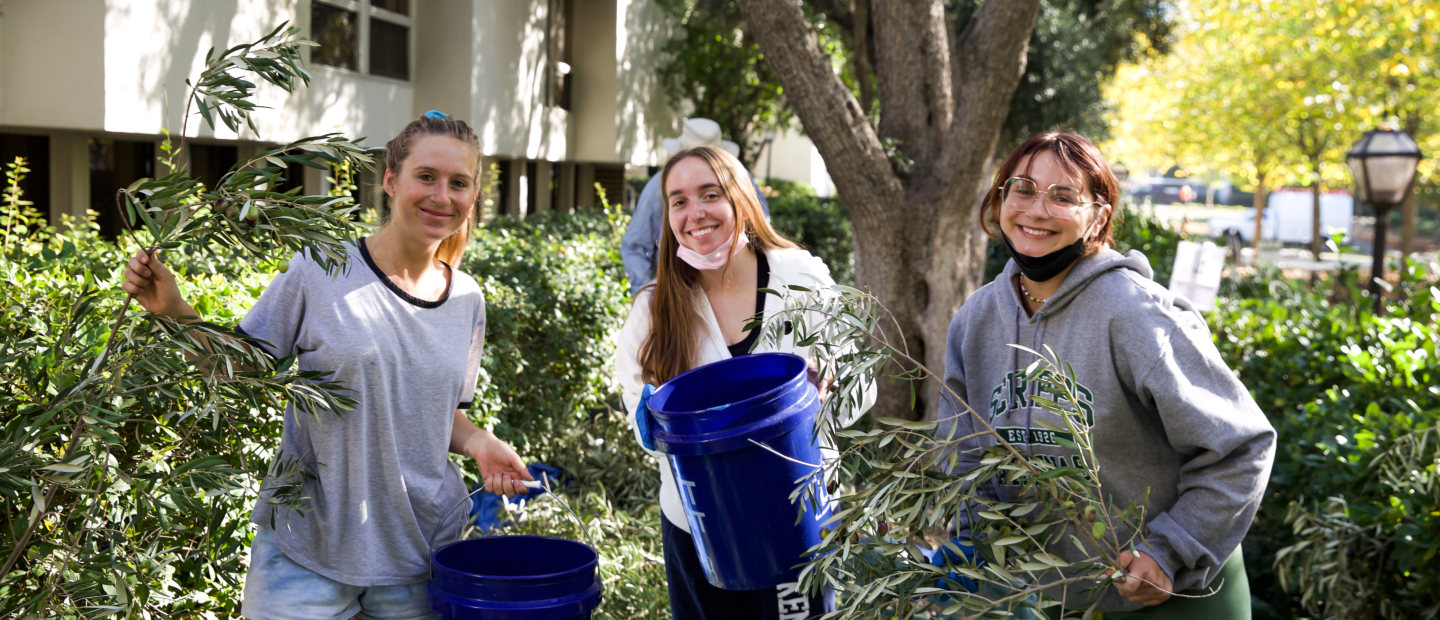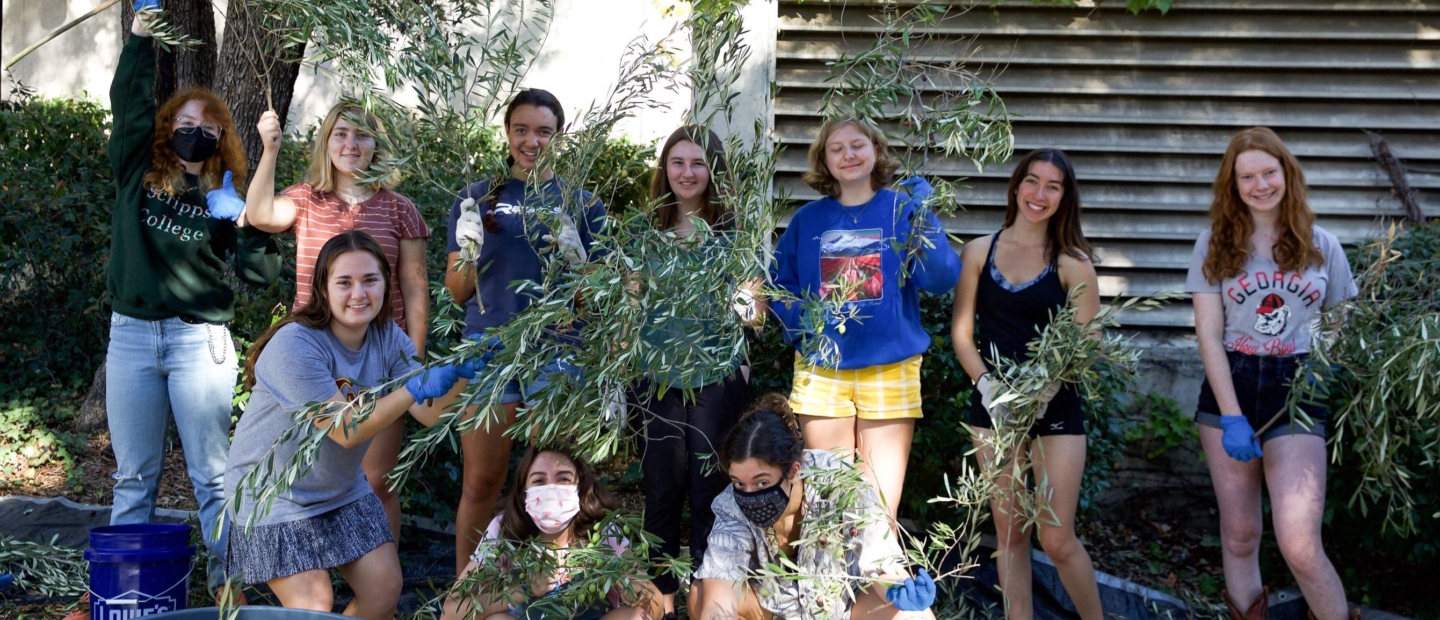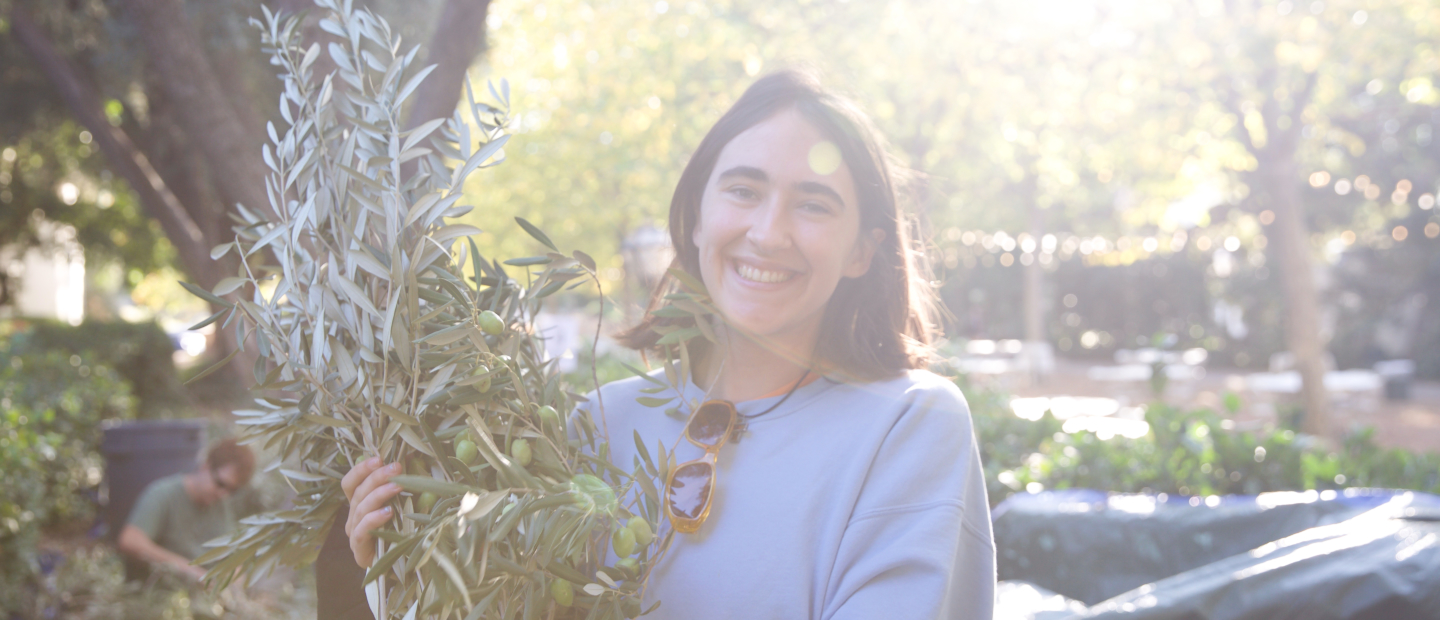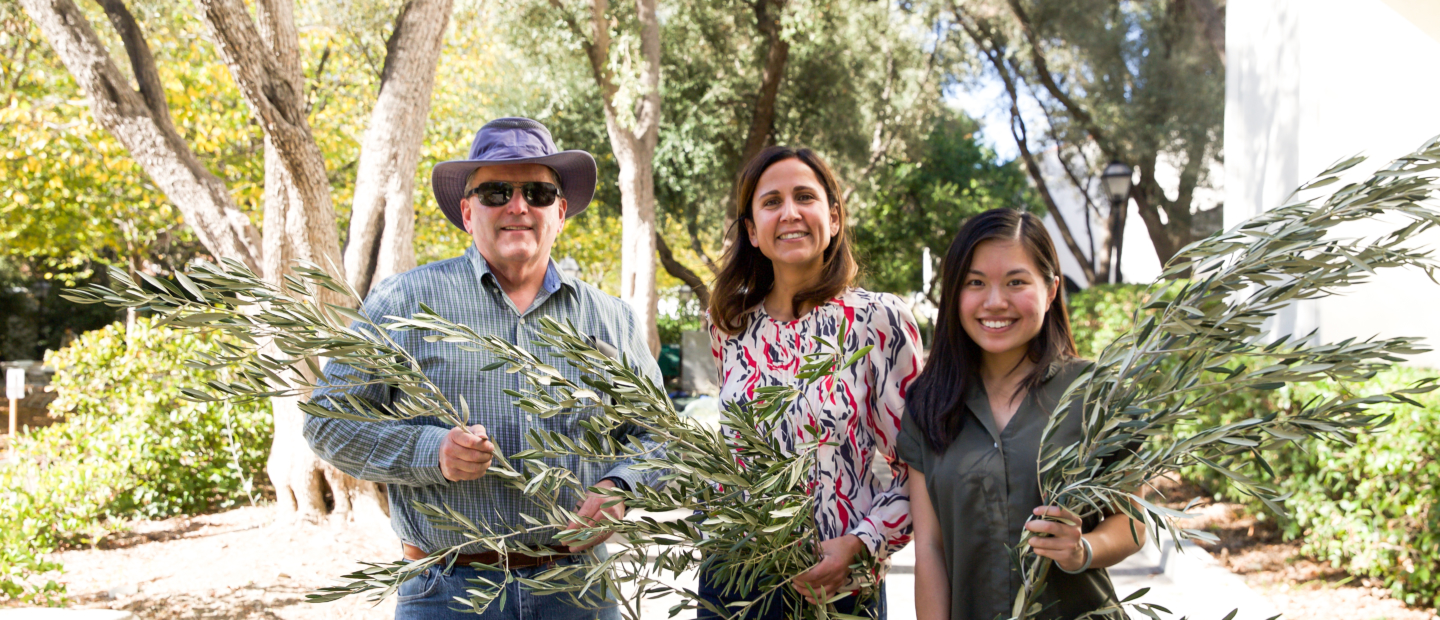About the Harvest
Since 2012, Scripps has invited Claremont College students, faculty, and staff, as well as the local community, to participate in harvesting the College’s olives. The harvest takes place when the olives are ripe – typically around October/November.
An annual label design contest is held to select the winning design for the olive oil bottles.
For more information, visit the Scripps College Olive Oil Project website.
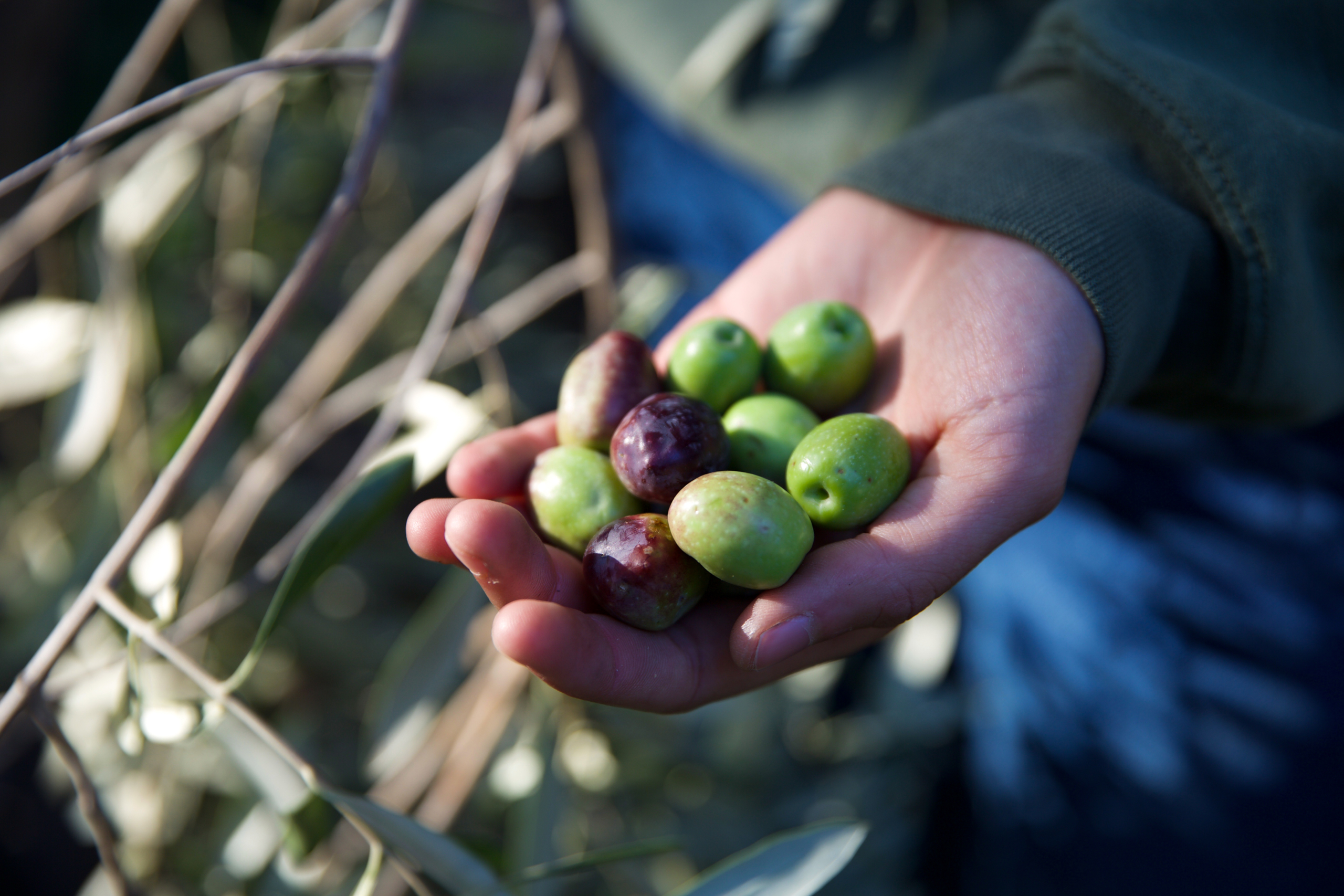
“This event highlights the intentionality of the original landscape design—to honor, utilize, and embrace seasonality for the benefit of the students.”
Joya Salas Landscape Operations Manager at Scripps College
History of Scripps Olive Oil
The presence of these olive trees on Scripps campus today is the result of student activism in the 1960s. In 1968, Scripps students “took to the trees,” protesting the removal of the Olive Grove during planned construction of the Humanities Building. As a result, 60 olive trees were carefully dug up, boxed, and stored during construction and eventually replanted.
In 2007, Professor Nancy Neiman taught the Core II course, “The Politics and Culture of Food,” in which she asked her class to choose an aspect of the Scripps community that could be more sustainable. Students developed a proposal to produce olive oil from the existing olive trees on campus, inspiring a new movement on campus to utilize the olives and other edible plants on campus as a food source.
On November 9, 2012, dozens of students, staff, and faculty members gathered for Scripps College’s first olive harvest. More than 700 8-oz. bottles were produced from a single day of harvesting. Described as “fruity, buttery, and smooth, with a good bite and an olive note,” Scripps olive oil was born. To date, olive oil sales have covered all production costs.


